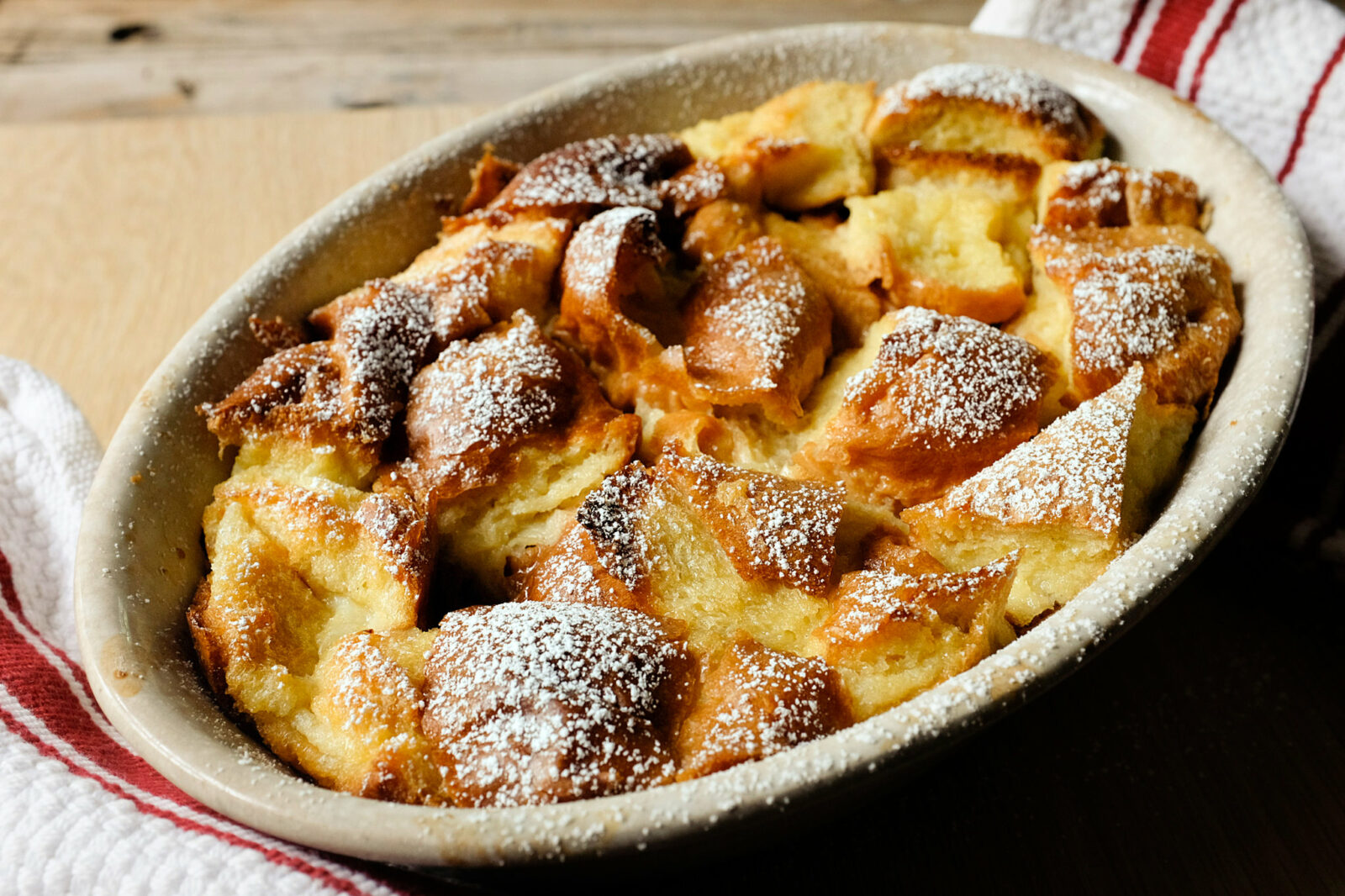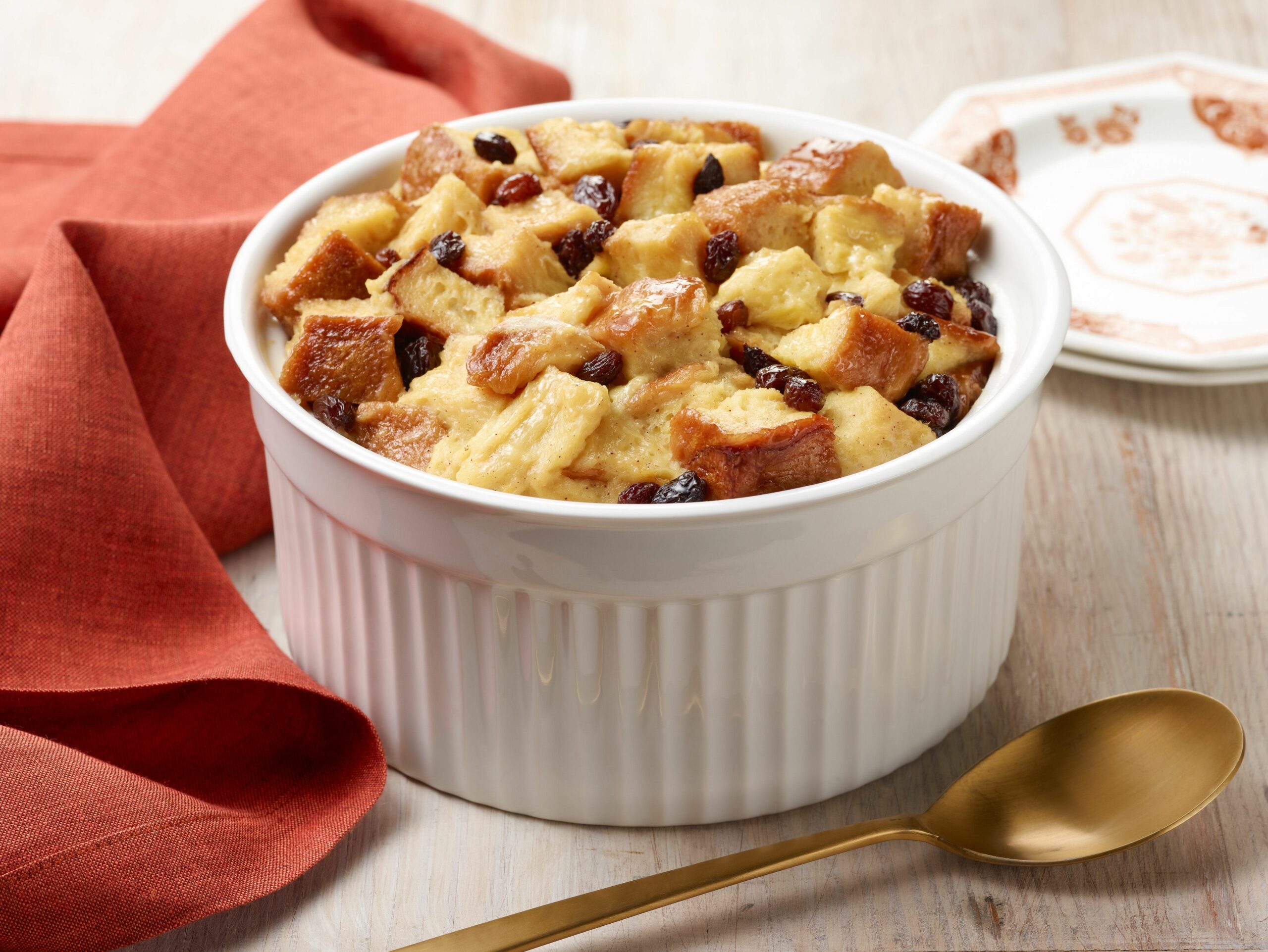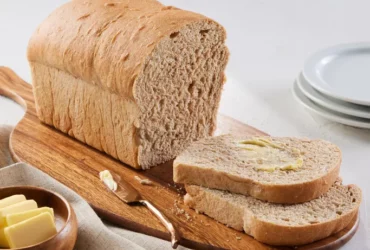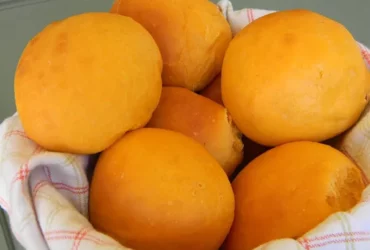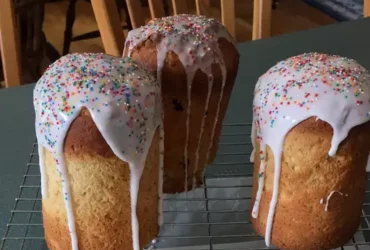Ingredients
Bread
The ingredients required for making an excellent bread pudding include a variety of essential components, all of which contribute to the rich flavor and texture of this popular dessert.
The first and foremost ingredient that makes up the base of a traditional bread pudding is Bread, preferably day-old or stale. White bread is commonly used for this purpose, but whole wheat, sourdough, or even croissants can be used as well to add texture and flavor.
The bread should be cubed into small pieces so that it can absorb the liquid ingredients effectively and evenly during the baking process.
Next comes the Milk, which is used to create a creamy sauce that binds all the ingredients together. Whole milk or 2% milk work well, but low-fat milk can also be used for those watching their diet.
The addition of Eggs provides moisture and richness to the bread pudding, making it an essential component of this dessert.
Sugar adds a touch of sweetness to balance out the savory flavors of the bread. Brown sugar, white granulated sugar, or even honey can be used, depending on personal preference.
Flavorings such as Nutmeg, Cinnamon, and Allspice are commonly added to give the bread pudding an aromatic taste. These spices complement the sweetness of the sugar and the savory flavor of the bread.
A variety of other ingredients can also be used to enhance the texture, flavor, or nutritional value of the bread pudding. Examples include raisins, dried fruits such as cranberries or cherries, chocolate chips, nuts like walnuts or pecans, or even vanilla extract or orange zest.
For a more decadent version of this dessert, some bakers add Cream, either whipped cream or heavy cream, to create a rich and creamy topping. This is an optional ingredient but adds a luxurious touch to the bread pudding.
The final component that sets apart an exceptional bread pudding from a mediocre one is the quality of the ingredients used. Freshly baked bread, farm-fresh eggs, and high-quality spices all contribute to creating a superior bread pudding with unparalleled texture and flavor.
In order to create a rich and flavorful bread pudding, it’s essential to select the right ingredients. The following are some of the key components that will make your bread pudding stand out:
- Bread: Stale or day-old bread is ideal for making bread pudding. You can use any type of bread you like, but challah, brioche, or a hearty whole-grain bread work particularly well.
- Eggs: Large eggs are the standard choice for bread pudding recipes. They provide moisture, richness, and help to bind the ingredients together.
- Milk/Dairy: Whole milk, half-and-half, or a non-dairy milk alternative like almond milk can be used to add creaminess and tenderness to your bread pudding.
- Sugar/Maple Syrup: White granulated sugar or pure maple syrup can be used to balance out the flavors in your bread pudding. The amount of sweetness you prefer will depend on personal taste.
Spices and Flavorings:
- Cinnamon, nutmeg, or cardamom can be added to give your bread pudding a warm and comforting flavor profile.
- Raisins, chocolate chips, or dried cranberries can add natural sweetness and texture to your dish.
Other optional ingredients that you may consider include:
- Butter: Melted butter can be added to the bread pudding mixture for extra richness and moisture.
- Nuts or seeds: Chopped nuts like walnuts or almonds, or sesame seeds can add texture and crunch to your bread pudding.
- Fruit preserves or jam: Adding a spoonful of fruit preserve or jam can introduce new flavors and colors into your dish.
The key is to choose ingredients that you enjoy eating, as this will ensure that the flavor of your finished bread pudding is appealing to you. By experimenting with different combinations of ingredients, you’ll be able to find a version that suits your taste buds perfectly.
4 cups stale bread, cubed
The first step in creating a delicious bread pudding is to gather the necessary ingredients, which include:
4 cups stale bread, cubed
This may seem like a substantial amount of bread, but it’s essential for achieving the right texture and consistency in the finished pudding. The cubes should be evenly cut and relatively uniform in size to ensure that they cook consistently throughout.
When selecting bread for this recipe, look for dense, stodgy loaves such as challah or brioche. These types of bread have a higher starch content than lighter varieties like white bread, which will help the pudding hold together better.
You can also use leftover baguette slices or even store-bought bread that’s past its prime – just be sure to adjust the cooking time accordingly if you’re using particularly dense or dry bread.
Cinnamonspiced bread for added flavor (University of California’s research suggests cinnamon enhances bread pudding)
When it comes to enhancing the flavor of a bread pudding recipe, one of the most effective ingredients to consider is cinnamon. According to research conducted by the University of California, cinnamon has been shown to have a positive impact on the flavor profile of bread puddings.
Incorporating cinnamon into your bread pudding recipe can add depth and warmth to the dish. Cinnamon’s sweet and spicy flavors work well with the richness of the bread and any other ingredients you may be using in your recipe, such as eggs, milk, or sugar.
To take full advantage of cinnamon’s flavor-enhancing properties, it’s essential to use high-quality cinnamon sticks or ground cinnamon powder. Look for Ceylon cinnamon or Mexican cinnamon, which are considered to have a more complex and aromatic flavor than other types of cinnamon.
Cinnamon-Infused Bread Pudding Recipe Tips
- Use stale bread to add texture and depth to your bread pudding. You can use a combination of white and whole wheat bread for added complexity.
- Incorporate other warm spices, such as nutmeg or ginger, to complement the flavor of cinnamon.
- Add a splash of vanilla extract to enhance the overall sweetness and creaminess of your bread pudding.
Cinnamon-Enhanced Bread Pudding Benefits
- Antioxidant properties: Cinnamon has been shown to have antioxidant properties, which can help protect against cell damage and inflammation in the body.
- Blood sugar control: Research suggests that cinnamon may help regulate blood sugar levels and improve insulin sensitivity.
- Mood booster: Cinnamon’s sweet and spicy flavors may help stimulate a sense of well-being and happiness, making it an excellent addition to comfort foods like bread pudding.
Conclusion
Incorporating cinnamon into your bread pudding recipe can elevate the flavor and nutritional profile of this comforting dessert. With its rich history, warm aroma, and potential health benefits, cinnamon is an essential ingredient to consider in any bread pudding recipe. By using high-quality cinnamon sticks or ground cinnamon powder and experimenting with other spices and ingredients, you can create a unique and delicious bread pudding that will leave your family and friends begging for more.
The essential ingredients required for preparing an authentic bread pudding recipe include:
Stale bread
typically a day-old white or sourdough loaf, which has been cubed and dried to remove excess moisture. The bread’s starches help absorb the liquid ingredients and give body to the pudding.
Eggs
large eggs provide richness and emulsify the mixture of milk, cream, and sugar, preventing it from separating during cooking.
Cinnamon
a pinch of ground cinnamon powder adds warmth to the pudding and complements the sweetness from the sugar. You may also use other spices like nutmeg or allspice according to your taste preferences.
Sugar
brown sugar is ideal for bread pudding as it contains molasses, which provides depth and a hint of caramel flavor.
Milk or cream
the liquid components add moisture, tenderness, and help to balance the richness from the eggs and butter. You can use whole milk, 2% milk, half-and-half, or heavy cream for an extra-creamy texture.
Butter
melted butter contributes a subtle flavor and tenderizes the bread by breaking down its starches. It also helps create a smooth, creamy pudding.
Optional ingredients
dried fruits like raisins, candied cranberries, or chopped cherries for added sweetness and texture, as well as nutmeg or Allspice to enhance the flavor profile.
To ensure a perfectly baked bread pudding, it is crucial to use high-quality ingredients and maintain the ideal balance between the wet and dry components. Adjusting the proportions of these ingredients can significantly impact the texture, flavor, and overall success of your bread pudding recipe.
Instructions
Pudding Preparation
To prepare a delicious bread pudding, follow these steps:
Preliminary Steps
- Preheat your oven to 350°F (175°C) and ensure it is set to bake.
- Gather all the necessary ingredients, including stale bread, milk, eggs, sugar, cinnamon, nutmeg, raisins, and a bit of melted butter.
Prepare your ingredients:
- Cut the stale bread into 1-inch (2.5 cm) cubes and place them in a large mixing bowl.
- In a separate bowl, whisk together the milk, eggs, sugar, cinnamon, nutmeg, and melted butter until well combined.
Assemble the pudding:
- Add the dry ingredients (cinnamon, nutmeg) to the bowl with the bread cubes and toss gently to coat the bread evenly.
- Pour the wet mixture over the bread cubes and stir until each piece is well coated. Be careful not to overmix.
Optional Ingredients
- Raisins can be added to the pudding for extra sweetness and texture.
Final Steps:
- Pour the bread mixture into a greased 9×13-inch (23×33 cm) baking dish.
- Bake for 35 to 40 minutes or until the top is golden brown and the pudding is set. The internal temperature should reach at least 190°F (88°C).
After baking, let the pudding rest in the oven with the door ajar for about 10 minutes before serving.
When it comes to following instructions for baking a bread pudding, clear and concise guidance is essential to achieve a delicious and well-crafted dessert. This is because bread puddings require specific steps to be taken at precise times to ensure that the ingredients are properly combined, cooked, and set.
In this context, instructions provide a roadmap for cooks to follow, outlining each step of the bread pudding recipe in detail, from preparation to cooking time. By adhering closely to these instructions, bakers can avoid mistakes and errors that might lead to an undercooked or burnt dessert, as well as ensure consistency in texture, flavor, and overall presentation.
A key aspect of effective instructions is specificity, which allows cooks to accurately measure ingredients, mix components, and cook the bread pudding at the right temperature. For example, a recipe may instruct cooks to use 2 cups of stale bread, 1/4 cup of brown sugar, and 1/2 teaspoon of ground cinnamon.
Instructions should also be presented in a logical order, making it easy for bakers to follow along as they work through the recipe. This means breaking down complex tasks into simpler steps, such as combining dry ingredients, whisking wet ingredients separately, or folding egg mixture into bread cubes.
An added benefit of clear instructions is that they enable cooks to troubleshoot common issues and make adjustments on the fly. By following a tried-and-true recipe, bakers can identify areas where things may have gone awry and make necessary corrections without sacrificing quality or flavor.
Ultimately, good instructions are essential for producing outstanding bread pudding, as they empower cooks with confidence and control over every step of the process. Whether you’re an experienced baker or a novice cook looking to try a new dessert, following clear instructions can help ensure that your finished product turns out just right – golden brown, crispy on top, and moist within.
Melt 1/4 cup butter; combine with brown sugar, eggs, vanilla extract, and milk in a bowl (study by the American Society for Nutrition found fatrich ingredients enhance flavors)
To prepare this rich and decadent bread pudding, it’s essential to follow a series of precise instructions to achieve the perfect texture and flavor.
Begin by preheating your oven to 350°F (175°C), ensuring that you have all the necessary ingredients within arm’s reach.
In a medium-sized bowl, melt 1/4 cup of butter. This will be the base of our mixture, providing a rich and creamy foundation for the other ingredients.
Next, combine the melted butter with 1/2 cup of packed brown sugar. Brown sugar is an essential component in bread pudding, as it adds depth and complexity to the flavor profile.
In a separate bowl, whisk together 4 large eggs until they are light and fluffy. This will help to incorporate air into the mixture, resulting in a moist and tender crumb.
Now, add the eggs to the bowl containing the butter and brown sugar. Whisk until well combined, making sure to scrape down the sides of the bowl to ensure everything is fully incorporated.
In a small measuring cup, mix together 1 teaspoon of vanilla extract and 2 cups of milk. This will give our bread pudding a subtle yet unmistakable flavor profile.
Add the vanilla-infused milk mixture to the bowl with the butter, brown sugar, and eggs. Whisk until smooth, making sure there are no lumps or streaks in the batter.
As noted by the American Society for Nutrition, using fat-rich ingredients such as butter and milk can enhance the overall flavor of our bread pudding. This is due to the Maillard reaction, a chemical reaction between amino acids and reducing sugars that occurs when foods are cooked, resulting in new flavor compounds being formed.
Finally, add 4 cups of cubed bread (preferably stale) to the bowl. This will provide structure and texture to our bread pudding, holding it together and giving it a satisfying bite.
Gently fold the bread into the batter until everything is well combined. Be careful not to overmix, as this can result in a dense and tough crumb.
Soak bread cubes in egg mixture; let it sit for 1015 minutes
To make a delicious bread pudding, you need to follow some crucial steps that involve soaking bread cubes in an egg mixture. This process is essential for infusing flavor and moisture into your bread pudding.
The first step involves whisking together the eggs, sugar, milk, and any other desired flavorings such as vanilla extract or cinnamon. Make sure to whisk these ingredients thoroughly until they are well combined and free of lumps.
Next, add the bread cubes to the egg mixture and let it sit for 10-15 minutes. This is where the magic happens, and the bread absorbs all the flavors from the egg mixture. It’s essential to allow the bread to soak in the mixture long enough so that it becomes soggy but not mushy.
During this time, you can also sprinkle any additional toppings or flavorings over the bread cubes. This could be something like chopped nuts, dried fruits, or even chocolate chips.
The longer you let the bread soak in the egg mixture, the more intense the flavors will become. However, if you let it sit for too long, the bread might become mushy and fall apart when cooked.
After 10-15 minutes of soaking, your bread cubes should be ready to go into the oven. Proceed with the recipe by greasing a baking dish, arranging the soaked bread cubes in it, and baking until golden brown. This will give you a delicious bread pudding that’s perfect for any occasion.
To begin with, understanding the concept of instructions is essential in any recipe, including the bread pudding recipe provided. Instructions are step-by-step guides that lead to a particular outcome or product. In cooking, instructions serve as a roadmap, ensuring that every component and action required for the final dish are executed correctly.
In the context of the bread pudding recipe, following the instructions is crucial in producing an authentic and appetizing dessert. Each line, whether it pertains to preparation, measurement, or cooking time, has been carefully crafted to result in a perfect blend of flavors and textures.
Instructions are presented in a clear and concise manner for ease of comprehension by individuals with varying levels of culinary expertise. They often include details about the sequence of actions, temperatures, and timescales necessary to achieve the desired outcome.
The importance of adhering to instructions when preparing bread pudding cannot be overstated. Incorrect execution can lead to an unappetizing dish that fails to satisfy both taste buds and nutritional requirements. Conversely, following the instructions meticulously ensures that the resulting product not only meets expectations but also possibly exceeds them through careful planning and attention to detail.
Moreover, understanding the purpose of each instruction helps in developing essential culinary skills, including measuring accurately, mixing thoroughly, and cooking evenly. These fundamental abilities are invaluable in preparing a wide range of dishes beyond bread pudding and foster a deeper connection with the art of cooking itself.
In conclusion, the instructions provided for the bread pudding recipe serve as a vital component of its overall success. By carefully following each step, individuals can create an authentic dessert that is both visually appealing and delectable in taste. It underscores the significance of clear and concise communication within culinary practices and highlights the importance of adhering to guidelines in order to achieve the best possible outcome.
Tips & Variations
Add-ins and Toppings
Bread pudding is a versatile dessert that can be customized to suit various tastes and preferences. To make it even more exciting, you can explore different tips, variations, add-ins, and toppings.
One of the most significant advantages of bread pudding is its ability to incorporate leftover bread, making it an ideal way to reduce food waste. However, the type of bread used can greatly impact the flavor and texture of the final product. For a more robust flavor, try using day-old sourdough or ciabatta, while Challah or brioche will add a sweeter and richer taste.
When it comes to liquid ingredients, you have several options to choose from. Traditional bread pudding recipes often rely on heavy cream or whole milk for moisture and richness. Alternatively, you can experiment with almond milk, soy milk, or even coconut milk for a dairy-free version.
Add-ins are an excellent way to introduce new flavors and textures into your bread pudding. Nuts such as walnuts or pecans provide a delightful crunch, while dried fruits like cranberries or raisins add natural sweetness. Chocolate chips or shaved dark chocolate can also be used to give the dessert a decadent twist.
Some people prefer their bread pudding warm and gooey, while others enjoy it chilled with a scoop of vanilla ice cream. If you’re looking for a unique serving suggestion, try drizzling caramel sauce over the top of the chilled bread pudding or using it as a base for a bread pudding trifle.
Beyond add-ins and toppings, there are various presentation ideas to consider. You can serve individual slices in small ramekins, garnish with edible flowers or microgreens, or even create a towering bread pudding sculpture. The possibilities are endless!
The art of making bread pudding is as much about creativity as it is about technique. The following tips and variations can help you elevate your bread pudding game and make this classic dessert a true masterpiece.
Tips
- Add-ins: Experiment with various nuts, dried fruits, or even chocolate chips to give your bread pudding an extra layer of texture and flavor.
- Sugar: Use a combination of white and brown sugar for a deeper flavor profile. You can also substitute some of the sugar with honey or maple syrup for added depth.
- Spices: Add a pinch of ground cinnamon, nutmeg, or cardamom to give your bread pudding an aromatic twist.
Variations
The beauty of bread pudding is that it can be customized to suit any taste. Here are some ideas to get you started:
- Bourbon Bread Pudding: Soak raisins and bourbon in the egg mixture for a boozy twist.
- Cinnamon Apple Bread Pudding: Add diced apples and sprinkle cinnamon on top for a fall-inspired dessert.
- Chocolate Chip Bread Pudding: Use dark chocolate chips and add a drizzle of chocolate sauce on top for a decadent treat.
Creamy Toppings
Take your bread pudding to the next level with these creamy toppings:
- Caramel Sauce: Drizzle warm caramel sauce over the bread pudding before serving for a sweet and sticky treat.
- Whipped Cream: Top the bread pudding with whipped cream and a sprinkle of cinnamon or nutmeg for added texture and flavor.
Additional Tips
For the fluffiest bread pudding, use day-old bread and make sure to soak it evenly. You can also try using a mixture of white and whole wheat bread for added nutrition.
Nutmeg or ginger for added depth (USDA recommends nutmeg as a spice)
To take your bread pudding to the next level, consider adding a pinch of warm spices to give it an extra boost of depth and character. One option is nutmeg, which pairs perfectly with sweet ingredients like bread, sugar, and dried fruit. The USDA recommends using nutmeg as a spice due to its numerous health benefits and culinary uses.
Nutmeg contains a compound called myristicin, which has been shown to have anti-inflammatory properties and may even help reduce the risk of certain diseases. In addition to its potential health benefits, nutmeg also adds a warm, aromatic flavor to bread pudding that complements other spices like cinnamon and cloves.
An alternative to nutmeg is ginger, which can add a spicy kick to your bread pudding. Fresh or dried ginger can be used, depending on the desired level of heat. Grate some fresh ginger over the top of the pudding before baking for an added depth of flavor and aroma.
For those who prefer a more subtle spice flavor, try using ground ginger instead of freshly grated ginger. You can also use crystallized ginger, which has been cooked in sugar syrup to give it a sweet and spicy flavor. Simply chop up some crystallized ginger and add it to the bread pudding mixture for an interesting twist.
When working with spices like nutmeg or ginger, remember that less is often more. Start with a small amount and adjust to taste, as the flavor can quickly become overpowering if too much spice is added. This will also help you achieve a balanced flavor in your bread pudding that showcases the unique qualities of each ingredient.
Finally, don’t be afraid to experiment with different combinations of spices to create a truly unique flavor profile for your bread pudding. Some other options might include allspice, cardamom, or even star anise. By pushing the boundaries of traditional spice flavors and techniques, you can unlock new and exciting possibilities in your baking.
Chopped nuts, chocolate chips, or dried fruits to enhance flavor (National Cancer Institute suggests cancerfighting properties of certain berries)
Bread pudding can be enhanced with various ingredients to add texture, flavor, and nutritional value. Chopped nuts are a popular choice as they provide a crunchy contrast to the soft bread. Almonds, walnuts, or pecans work well in this recipe.
For chocolate lovers, adding dark or semi-sweet chocolate chips can elevate the dessert’s flavor profile. Dark chocolate contains antioxidants and may offer health benefits when consumed in moderation.
Dried fruits such as cranberries, cherries, or raisins can add sweetness and chewiness to the bread pudding. They are especially suitable for those who prefer a fruit-forward flavor combination.
The National Cancer Institute suggests that certain berries, like blueberries, raspberries, or strawberries, have cancer-fighting properties due to their high content of antioxidants and polyphenols. Adding these berries can not only enhance the flavor but also provide potential health benefits.
When incorporating any of these ingredients, consider balancing them with other components to avoid overpowering the bread’s flavor. A general rule of thumb is to start with a small amount and adjust to taste.
Avoid overmixing when combining the ingredients to prevent creating an unappealing texture or disrupting the bread’s structure. Fold in the add-ins gently until they are evenly distributed throughout the mixture.
To make a delicious bread pudding, you can experiment with various tips and variations to give it a unique twist.
Bread Selection: The type of bread used is crucial in determining the flavor and texture of the bread pudding.
- Use stale or day-old bread, preferably a dense variety like Challah, brioche, or ciabatta.
- You can also use leftover croissants, baguette slices, or even biscuits for added texture and flavor.
Liquid Ingredients: The amount and type of liquid ingredients used will affect the consistency and moisture level of the bread pudding.
- Use a combination of milk, cream, and/or eggs to achieve a rich and creamy texture.
- Add cinnamon, nutmeg, or other spices to enhance the flavor and aroma of the bread pudding.
Flavor Enhancers: Introduce various flavors to give your bread pudding a unique twist.
- Add raisins, dried cranberries, or other dried fruits for added sweetness and chewiness.
- Use chocolate chips or cocoa powder to create a decadent chocolate bread pudding.
- Mix in nuts like walnuts, almonds, or hazelnuts for added crunch and flavor.
Toppings: Add a finishing touch with various toppings to elevate the presentation and taste of your bread pudding.
- Serve with whipped cream, vanilla ice cream, or other creamy toppings for added indulgence.
- Add fresh fruit, such as berries or sliced bananas, for a pop of color and natural sweetness.
- Best Datanyze Alternatives for 2025 - April 24, 2025
- Best Hunter.io Alternatives for 2025 - April 22, 2025
- Best Lead411 Alternatives for 2025 - April 22, 2025

